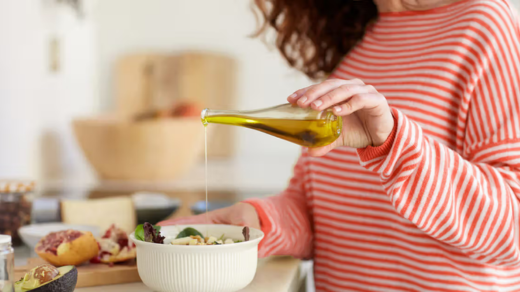
extra virgin olive oil
When it comes to cooking oils, extra virgin olive oil (EVOO) stands in a league of its own. More than just a kitchen staple, it’s a symbol of health, tradition, and culinary finesse. Rich in flavor and packed with antioxidants, EVOO can elevate even the simplest of dishes. But if you’ve ever stood in front of a shelf filled with olive oil bottles, overwhelmed by labels and prices, you’re not alone. Choosing the right extra virgin olive oil can feel like picking a fine wine — it requires a bit of knowledge, a little tasting, and an understanding of what really matters.
Let’s start with the basics. Extra virgin olive oil is the highest quality olive oil you can buy. It’s made from the first cold pressing of the olives, without the use of chemicals or heat, preserving the natural flavors, aromas, and nutrients. But not all bottles labeled “extra virgin” are created equal. The label might say “extra virgin,” but the quality depends heavily on the source, processing methods, and storage.
The first thing to look at is origin. Single-origin oils, especially from countries like Greece, Italy, and Spain, tend to have more consistent flavor profiles and better quality control. If the bottle says “Greek extra virgin olive oil,” and the olives were grown, harvested, and pressed in a specific region of Greece, chances are you’re getting an authentic product. Some producers even go further, indicating the specific estate or farm, which usually means more attention to detail and care.
Color is often misunderstood. Many people think that greener olive oil is automatically better, but that’s not necessarily true. The color of olive oil can range from deep green to golden yellow, depending on the type of olive and when it was harvested. Early-harvest oils tend to be greener and more bitter or peppery, while later harvests are milder and fruitier. What really matters is taste and aroma, not color.
Speaking of taste, a quality extra virgin olive oil should have a balanced flavor profile. You should notice some fruitiness, a touch of bitterness, and often a peppery finish that makes you cough just a little — that’s a sign of healthy polyphenols. These compounds are responsible for many of the oil’s health benefits, including anti-inflammatory properties. Don’t shy away from oils with bold character; they’re ideal for finishing dishes, drizzling over salads, or pairing with bread.
Another important factor is harvest date. Freshness matters. Unlike wine, olive oil doesn’t improve with age. Look for a harvest or bottling date on the label and aim to use the oil within 12 to 18 months of that date. If there’s no date listed, be cautious — high-quality producers usually take pride in sharing this information.
Packaging also tells a story. Extra virgin olive oil should always come in a dark glass bottle or a tin, not clear plastic. Light and heat degrade the oil over time, reducing both its flavor and health benefits. Once you open a bottle, store it in a cool, dark place and use it within a few months for the best experience.
You should also think about how you plan to use the oil. For cooking at low to medium heat, a mild extra virgin olive oil with a softer profile is ideal. For raw applications — salad dressings, dipping, drizzling over grilled vegetables or even desserts — reach for a more robust oil that adds punch and depth.
Budget plays a role too, but don’t automatically assume that a higher price equals better quality. Some affordable options, particularly from trusted producers in Greece, offer exceptional value. Greek olive oil, for example, is renowned for its smooth taste and balanced richness, making it a versatile choice for everyday cooking and gourmet applications alike. Whether you’re whipping up fresh salads, grilled vegetables, or light pasta dishes, it easily fits into countless ideas for lunch that are both delicious and wholesome.
Don’t be afraid to experiment. Taste a few different brands and types to find what suits your kitchen and your palate. Think of extra virgin olive oil not just as an ingredient, but as a flavor in itself. When chosen wisely, it becomes a cornerstone of your cooking, enhancing every dish with a touch of the Mediterranean. Much like the relationship between a man and a woman, the bond between a cook and their olive oil is built on balance, harmony, and discovering what complements each other best. So next time you’re restocking your pantry, take a moment to read the label, check the harvest date, and consider what kind of meals you love to cook. The perfect extra virgin olive oil isn’t just about quality — it’s about finding the one that speaks to your taste and style.







